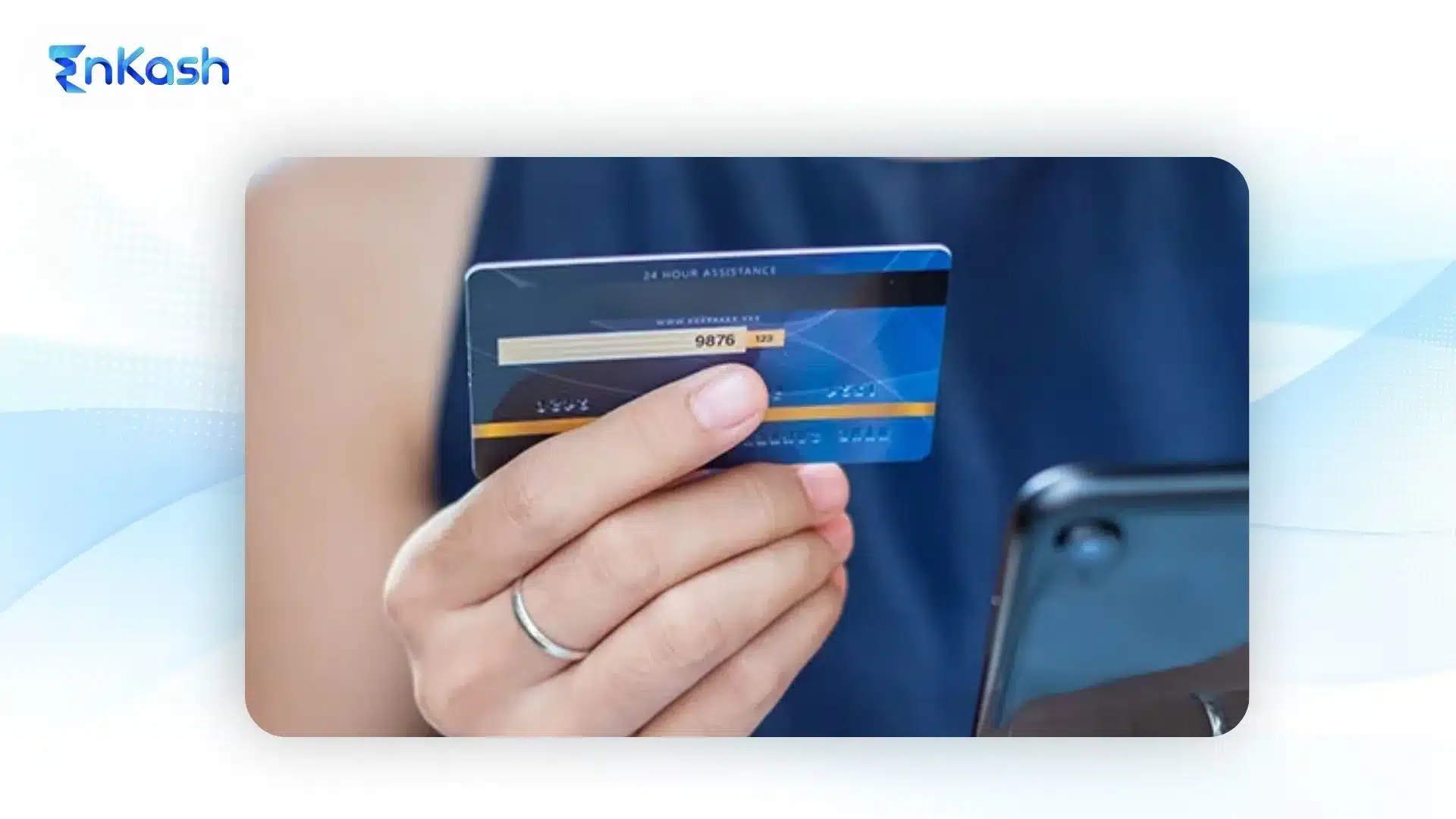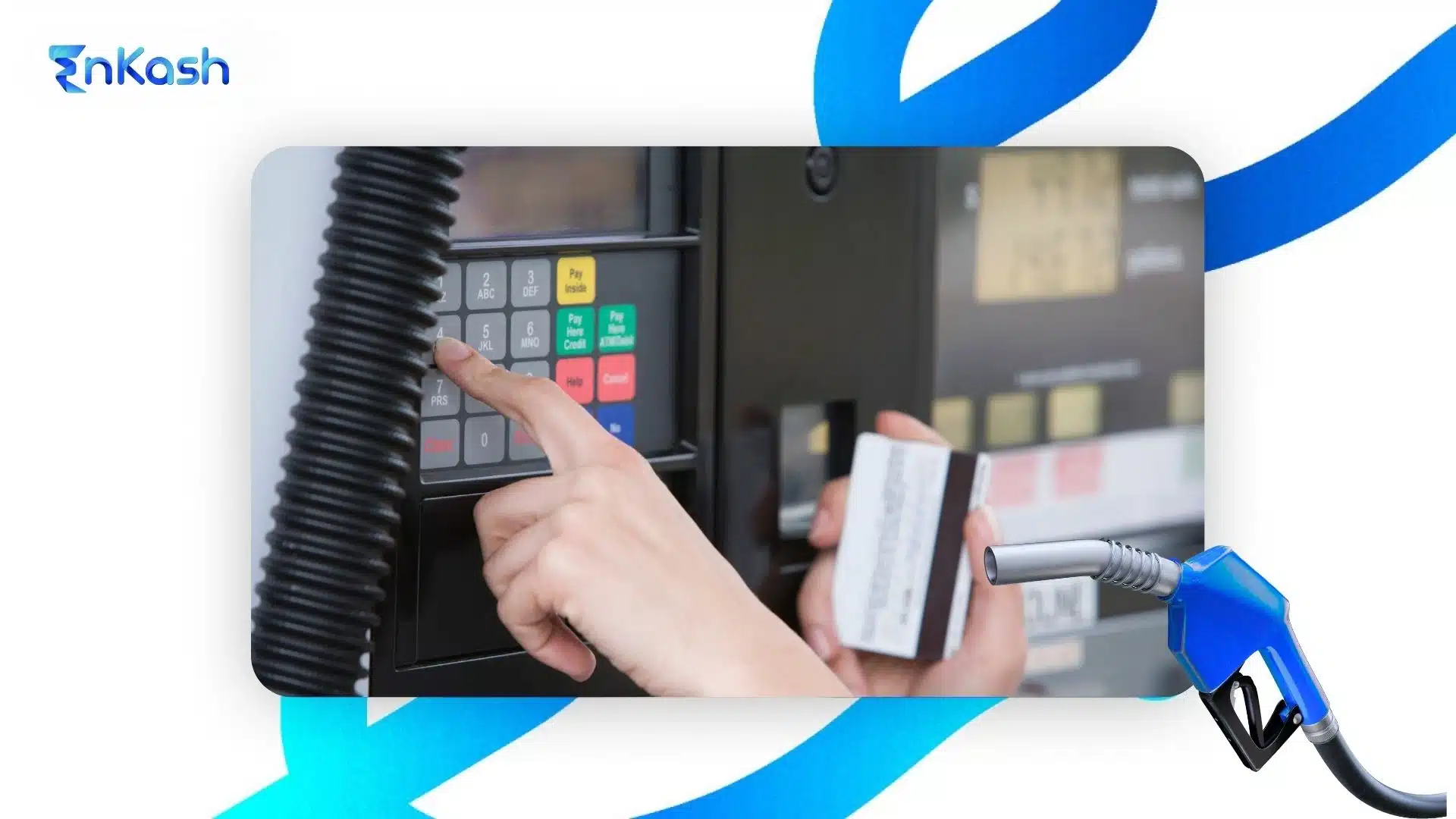Software teams today spend money differently than traditional businesses. Instead of buying office supplies or booking hotels, most of their expenses are tied to tools, cloud platforms, and digital services that run every day. These services are billed monthly, renewed automatically, and spread across different departments. Because of this, the way companies handle payments has become just as important as the tools they use.
This has raised a clear question for managers and finance teams: should they rely on corporate cards, or switch to SaaS cards designed to handle digital subscriptions? The debate of SaaS cards vs corporate cards is now shaping how software teams manage budgets and reduce waste.
The difference between SaaS cards and corporate cards lies in control and visibility. Traditional options work for travel and vendor payments, but they are not built for the rhythm of recurring subscriptions. On the other hand, SaaS cards give more clarity, better tracking, and tighter control for every tool or service a team uses.
In this blog, we will explore what sets them apart, where each type works best, and how software companies can choose the right system. By the end, you will see why modern software teams are leaning toward smarter ways to pay and track expenses.
The Rise of SaaS in Modern Software Teams
The way software teams work has changed in recent years. Instead of relying on bulky hardware or fixed office systems, they now depend on digital services that run online. Every task, from writing code to managing projects, is supported by a service that requires a subscription. These services include cloud storage, testing platforms, communication tools, and security systems.
The challenge with these subscriptions is that they renew automatically and are scattered across different teams. A developer may use a cloud server, a designer may need a creative tool, and the testing team may run several platforms at the same time. This creates a steady flow of charges that can be hard to monitor when traditional systems are used.
Traditional payment methods were never built for this style of spending. Corporate cards are useful for travel or one-time expenses, but they do not give enough clarity for dozens of small, recurring payments. This is why companies are now searching for smarter solutions.
The answer many teams are turning to is SaaS cards. These are designed to track and control digital spending. They allow managers to set clear limits, assign a card to each tool, and view exactly where the budget is going. This makes it possible to control SaaS subscriptions with smart cards and avoid wasting money on unused services.
The growth of SaaS in daily workflows has made financial tools just as important as the software itself. Without the right system in place, costs rise quickly, and tracking becomes a struggle. For this reason, many software teams are moving toward a payment method that matches the way they actually work.
What Are Traditional Corporate Cards?
Corporate cards have been used by businesses for decades. They are issued by banks and linked directly to the company’s main account. Employees use them for approved expenses such as travel, client meetings, or large purchases from vendors. For many years, this method has been the standard way to handle business costs.
These cards work well when a company has expenses tied to physical needs. Booking flights, paying for hotels, or covering meals during travel is simple with a corporate card. It gives employees access to funds without asking for reimbursements later. Finance teams also find it easier to approve one large card account rather than deal with scattered payments.
However, when it comes to managing subscriptions and digital tools, the picture changes. Corporate cards are built for general spending, not recurring charges that renew every month. Software teams often face problems such as hidden renewals, lack of detailed tracking, and delayed reporting. With several services linked to the same card, it becomes difficult to know exactly which tool is being billed.
Another issue is security. Sharing a single corporate card number with many vendors increases risk. If one service provider faces a data breach, the company’s main card details may be exposed. Blocking the card creates even bigger problems, as it disrupts all the linked payments at once.
The debate of traditional business card vs SaaS card shows why software companies are reconsidering their approach. While corporate cards still serve a purpose, they are not always the best choice for modern digital-first teams.
What Are SaaS Cards?
SaaS cards are designed for companies that rely heavily on digital services and online tools. Unlike traditional cards, they are built to handle recurring subscriptions and software expenses. Each card can be linked to a single tool, project, or team, which makes tracking much clearer.
Most SaaS cards work as prepaid or controlled-spending systems, though some providers may offer credit-backed options. Managers load a budget onto the card and set clear limits for spending. This way, if a service tries to renew at a higher price or without approval, the payment will fail. It gives companies better control and removes the risk of surprise charges.
Another major benefit is visibility. With SaaS cards for software teams, every expense is easy to trace back to a tool or department. If a team no longer needs a subscription, the manager can cancel it quickly by freezing the card. There is no need to chase multiple vendors or wait for long billing cycles.
Security is also stronger with SaaS cards. Instead of exposing one corporate card to dozens of vendors, each subscription has its own unique payment method. If there is ever a security breach, only that single card is affected, and the rest of the system remains safe.
Using a prepaid card for SaaS expenses also improves financial reporting. Many of these cards connect directly to accounting platforms. Finance teams no longer need to manually check invoices, as every charge is recorded in real time.
SaaS cards give software companies a smarter way to pay for the services they depend on. They bring control, safety, and flexibility in a way that traditional systems cannot match.
Key Differences Between SaaS Cards and Corporate Cards
Both SaaS cards and corporate cards help companies manage spending, but they serve very different needs. Corporate cards are better suited for traditional business costs like travel or large vendor deals, while SaaS cards are built for recurring subscriptions and digital services. To understand the difference between SaaS cards and corporate cards, it helps to look at how they work in practice.
Control Over Spending
- Corporate cards allow broad access but lack precise control. Once a card is given to a team member, they can use it across multiple vendors unless restrictions are set manually.
- SaaS cards are built for tighter control. Each card is assigned to a single tool or service, with pre-set budgets that limit how much can be charged. This stops unnecessary upgrades and unexpected renewals.
Visibility and Tracking
- With corporate cards, it is difficult to see which charges belong to which subscription. All expenses pile into a single statement, and finance teams need to sort them manually.
- SaaS cards provide clear visibility. Every card is linked to a specific service, so teams know exactly where money is going without guesswork.
Handling Recurring Subscriptions
- Corporate cards were never designed for a landscape filled with dozens of small, recurring payments. They make it harder to stop unused tools since all renewals flow through one account.
- SaaS cards simplify this problem. If a subscription is no longer needed, managers can freeze or cancel the card tied to that service, ending the charge instantly.
Security Risks
- Sharing the same corporate card across multiple vendors increases exposure. If one vendor suffers a data breach, the company’s central card details may be at risk.
- SaaS cards limit this risk. Each vendor has its own card, so even if one is compromised, the rest of the system stays secure.
Scalability for Growing Teams
- As companies scale, managing multiple subscriptions with a single corporate card becomes messy. Finance teams spend more time reconciling invoices and chasing down approvals.
- SaaS cards scale naturally. Teams can issue new cards quickly, assign them to projects, and maintain control without slowing down.
Integration with Finance Systems
- Corporate cards usually come with limited automation. Expense reports and accounting entries are handled after transactions occur.
- SaaS cards connect directly with modern finance tools, syncing charges in real time. This cuts down on manual work and speeds up reporting.
In short, the debate of SaaS cards vs corporate cards highlights two very different approaches. Corporate cards remain useful for traditional business expenses, but for modern software teams with heavy subscription use, SaaS cards offer sharper control, stronger visibility, and safer spending.
Why Software Teams Prefer SaaS Cards
Software teams manage expenses that look very different from those of traditional businesses. Most of their spending is tied to subscriptions, developer tools, cloud services, and digital platforms.
While corporate cards can cover these costs, they lack the control and flexibility needed in this environment. This is why SaaS cards are becoming the preferred option for software teams.
Better Budget Control
SaaS cards allow managers to set strict limits on how much each service can spend. If a vendor tries to charge extra or renew without permission, the card simply blocks the payment. This stops overspending and ensures budgets stay on track.
Faster Approvals and Access
Instead of waiting for long finance approvals, teams can get a SaaS card for a specific service right away. This speeds up access to new tools and helps teams move faster without unnecessary delays.
Clear Transparency in Spending
With SaaS cards, every card is tied to one service. This gives teams a clear view of where money is going, unlike corporate cards where charges get mixed together in a single statement.
Reduced Security Risks
Each SaaS card works separately. If one vendor is hacked or compromised, only that card is at risk, and it can be canceled immediately. The rest of the company’s payments remain safe.
No Hidden Renewals
SaaS cards make it easy to cut off unused subscriptions. If a card is frozen or left empty, the service cannot renew, which prevents money from being wasted on forgotten tools.
Smoother Accounting
SaaS cards connect directly with finance software and record expenses in real time. This saves finance teams from hours of manual tracking and makes reporting much easier.
The case for why software teams prefer SaaS cards is clear. They give more control, stronger security, and better visibility than traditional corporate cards, making them a natural fit for subscription-heavy companies.
When to Use a SaaS Card vs a Corporate Card
Both SaaS cards and corporate cards have their strengths. Choosing the right one depends on the type of expense and the way a company manages its workflows.
SaaS Cards for Recurring Subscriptions
These are the best choice for digital tools, cloud services, and other recurring software costs. By assigning a card to each service, teams gain visibility and prevent unwanted renewals.
SaaS Cards for Fast-Growing Teams
When multiple teams or projects need different tools, SaaS cards make scaling easier. Managers can issue new cards quickly without risking the company’s main account.
Corporate Cards for Travel and Entertainment
Corporate cards remain useful when employees need to pay for flights, hotels, or meals. They are widely accepted and work well for expenses linked to in-person business activities.
Corporate Cards for One-Time Vendor Payments
Large purchases such as equipment or bulk software licenses are simpler to handle with a corporate card. These payments do not require ongoing tracking, so a single charge is easy to manage.
Hybrid Use for Balance
Many companies benefit from using both. Corporate cards cover traditional business expenses, while SaaS cards manage subscriptions and digital services. This balance allows companies to stay flexible without losing control.
The question of when to use a SaaS Card vs. a corporate Card depends on spending patterns. For recurring digital costs, SaaS cards are the smarter option, but corporate cards still have value for broader business needs.
Choosing the Right Card for Software Expenses
Software companies need a clear framework to decide between SaaS cards and corporate cards. The choice depends on how the team spends money, the size of the company, and the kind of expenses they face.
Consider the Volume of Subscriptions
If your company pays for many recurring tools, SaaS cards make management easier. Each service can be tied to its own card, giving full control over renewals and budgets.
Look at Company Size
Small startups benefit from SaaS cards because they need quick access to tools without complex approvals. Larger enterprises may require both, as they balance travel, vendor contracts, and subscriptions.
Measure the Level of Control Needed
Companies that want strict oversight of every digital charge should rely on SaaS cards. Those that only need broad expense coverage may find corporate cards sufficient.
Think About Accounting Workflows
If your finance team struggles with reconciliation, SaaS cards will save time by syncing expenses directly into accounting systems. Corporate cards create more manual work with mixed statements.
Review Security Priorities
For businesses concerned about exposing one main card to dozens of vendors, SaaS cards add safety. Each vendor has its own payment method, reducing risks from breaches.
How to choose the right card for software expenses depends on striking a balance. SaaS cards shine for digital-first spending, while corporate cards cover broader business needs. Together, they give companies the flexibility to stay efficient and secure.
Conclusion
The debate of SaaS cards vs corporate cards shows that both have an important role in modern businesses. Corporate cards remain reliable for traditional expenses like travel, vendor payments, and one-time purchases. However, for software teams that rely heavily on digital tools and recurring subscriptions, SaaS cards provide sharper control, stronger security, and clearer visibility. They make it easy to manage renewals, prevent unnecessary spending, and streamline accounting. The smartest approach for many companies is to use a mix of both systems, with corporate cards covering broad business costs and SaaS cards handling subscription-heavy spending. This balance allows software teams to stay efficient, secure, and fully in control of their expenses.
FAQs
1. How do SaaS cards improve subscription management compared to manual tracking?
SaaS cards make subscription management easier by assigning a unique card to each tool or service. This prevents renewals from slipping through unnoticed. Finance teams can freeze or cancel a card instantly, eliminating the need to manually chase vendors or track forgotten invoices in spreadsheets.
2. Can SaaS cards help reduce software waste in growing teams?
Yes. Growing teams often sign up for tools during projects but forget to cancel them later. SaaS cards stop this waste because unused services can be shut down by disabling the linked card. This ensures the company pays only for active, necessary subscriptions.
3. Do SaaS cards provide insights into how different teams spend on software?
SaaS cards create visibility at the team level. Each card can be linked to a department or project, making it simple to track spending patterns. Managers can see which teams rely on which tools, helping them decide whether certain subscriptions should be scaled, reduced, or replaced.
4. What risks do companies face when relying only on corporate cards for SaaS expenses?
Using corporate cards for SaaS expenses hides renewals inside large statements. This increases the chance of overspending and makes it harder to detect unused tools. It also raises security risks, since many vendors share the same card number, exposing the company to potential fraud or breaches.
5. Are SaaS cards suitable for companies outside the software industry?
Yes. Any business with recurring subscriptions can benefit from SaaS cards. Marketing teams use them for ad platforms, remote teams use them for collaboration tools, and HR departments manage payroll software. SaaS cards fit any industry that depends on digital tools to operate efficiently.
6. How do SaaS cards support financial compliance and audits?
SaaS cards record every charge in real time, with each card linked to a specific vendor. This creates an automatic audit trail that is easy to verify. During compliance checks, finance teams can quickly show which tools were paid for, when renewals occurred, and how budgets were allocated.
7. What features should a company look for when choosing a SaaS card provider?
A strong SaaS card provider should offer budget controls, real-time tracking, accounting integrations, and the ability to issue multiple cards quickly. Security features such as card freezing, vendor restrictions, and fraud monitoring are also essential. The best providers combine flexibility with detailed financial visibility.
8. How do SaaS cards impact team productivity?
SaaS cards remove delays in tool access. Instead of waiting for finance approval, a team can be issued a dedicated card for the software they need. This speeds up onboarding, reduces downtime, and lets teams focus on their work rather than navigating complex approval processes.
9. Can SaaS cards replace expense reimbursement systems?
In many cases, yes, SaaS cards can reduce or even eliminate the need for reimbursements. Instead of employees paying out of pocket and filing reimbursement claims, managers can issue SaaS cards for required tools. This removes the need for reimbursements, reduces paperwork, and ensures that spending is controlled and tied directly to the company’s financial systems.
10. What is the long-term cost benefit of switching to SaaS cards?
The long-term benefit is reduced waste and stronger control over budgets. By preventing hidden renewals and unauthorized upgrades, SaaS cards cut unnecessary expenses. Over time, this creates significant savings, particularly for fast-growing companies that rely heavily on software subscriptions to run their operations.








